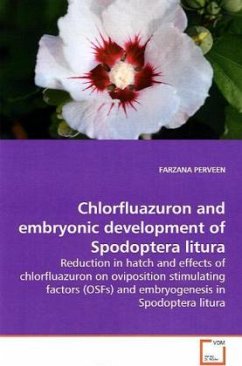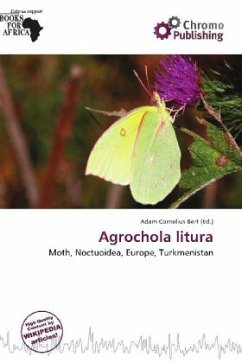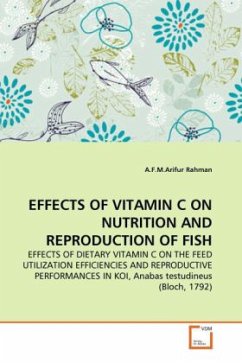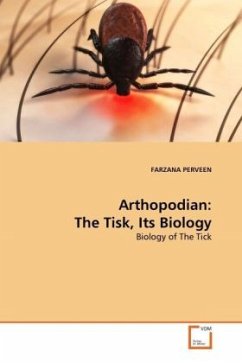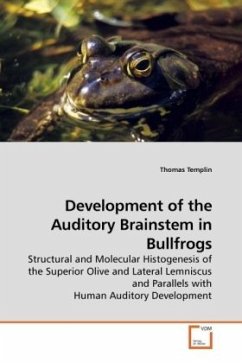
EFFECTS OF CHLORFLUAZURON ON THE REPRODUCTION OF SPODOPTERA LITURA
EFFECTS OF CHLORFLUAZURON ON GROWTH OF COMMON CUTWORM, SPODOPTERA LITURA WITH SPECIAL REFERENCE TO MORPHOLOGY
Versandkostenfrei!
Versandfertig in 6-10 Tagen
45,99 €
inkl. MwSt.

PAYBACK Punkte
23 °P sammeln!
Lethal doses of chlorfluazuron, when applied topically to 5th instars or pupae of S. litura, caused toxicity & malformations, which ultimately lead to the death of organism. Sublethal doses of it, when applied to fifth-instars or pupae, caused significant reduction in reproduction and effects on viability. Sublethal-doses were topically applied to 5th instars, significantly reduced ovarian and testicular development. The same doses also significantly reduced number of inseminated sperm. Interference bychlorfluazuron, transferred by copulation through sperm fluids or ova, appears improbable. Th...
Lethal doses of chlorfluazuron, when applied
topically to 5th instars or pupae of S. litura,
caused toxicity & malformations, which ultimately
lead to the death of organism. Sublethal doses of
it, when applied to fifth-instars or
pupae, caused significant reduction in reproduction
and effects on viability. Sublethal-
doses were topically applied to 5th instars,
significantly reduced ovarian and testicular
development. The same doses also significantly
reduced number of inseminated sperm. Interference by
chlorfluazuron, transferred by copulation through
sperm fluids or ova, appears improbable. The
significant variations in the egg contents were
observed during embryogenesis. Morphological
characteristics were divided into eight embryonic
developmental stages during 0 84 h of development on
the basis of microscopic examinations. Sublethal-
doses of chlorfluazuron reduced the fecundity,
fertility and hatchability which were caused by
direct effects on reproductive organs. This is an
important discovery, as it provides an important
clue to the mechanism of chlorfluazuron action,
which has great impact on insect physiology and
toxicology.
topically to 5th instars or pupae of S. litura,
caused toxicity & malformations, which ultimately
lead to the death of organism. Sublethal doses of
it, when applied to fifth-instars or
pupae, caused significant reduction in reproduction
and effects on viability. Sublethal-
doses were topically applied to 5th instars,
significantly reduced ovarian and testicular
development. The same doses also significantly
reduced number of inseminated sperm. Interference by
chlorfluazuron, transferred by copulation through
sperm fluids or ova, appears improbable. The
significant variations in the egg contents were
observed during embryogenesis. Morphological
characteristics were divided into eight embryonic
developmental stages during 0 84 h of development on
the basis of microscopic examinations. Sublethal-
doses of chlorfluazuron reduced the fecundity,
fertility and hatchability which were caused by
direct effects on reproductive organs. This is an
important discovery, as it provides an important
clue to the mechanism of chlorfluazuron action,
which has great impact on insect physiology and
toxicology.



